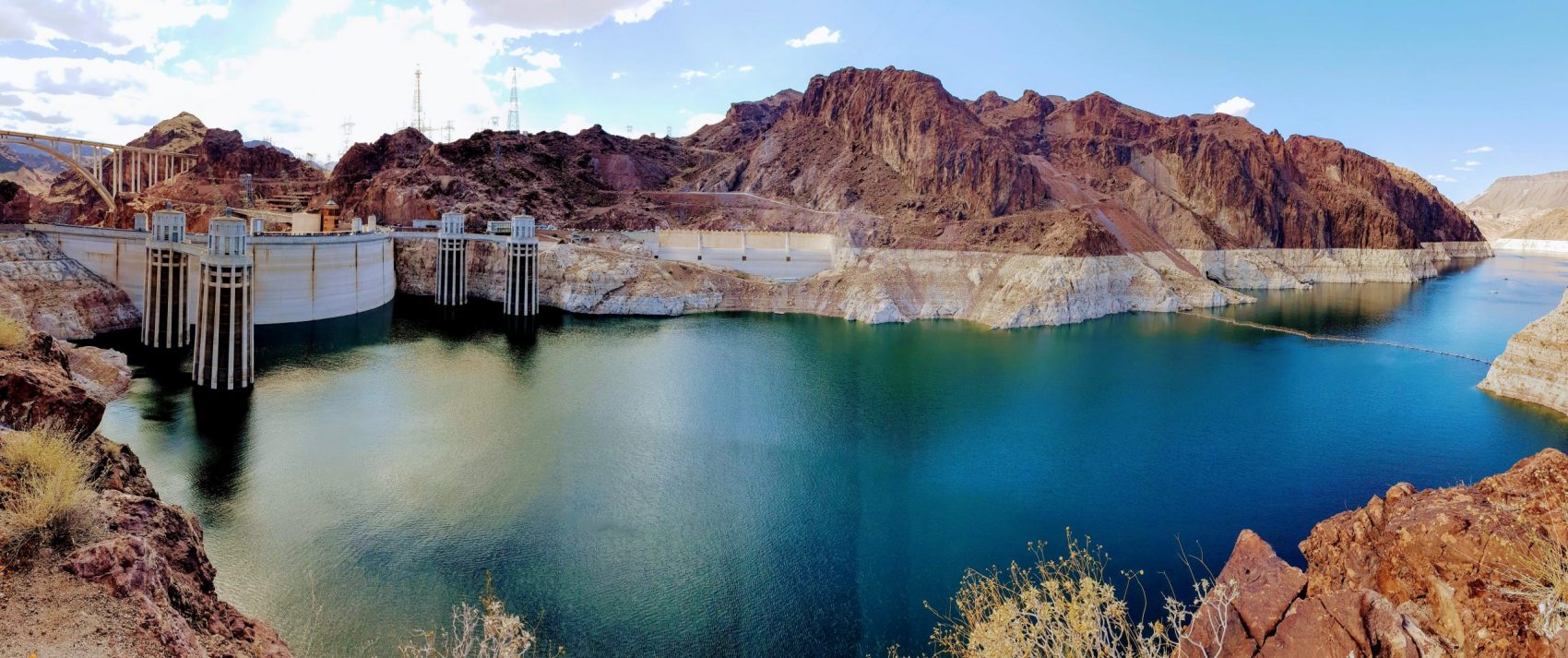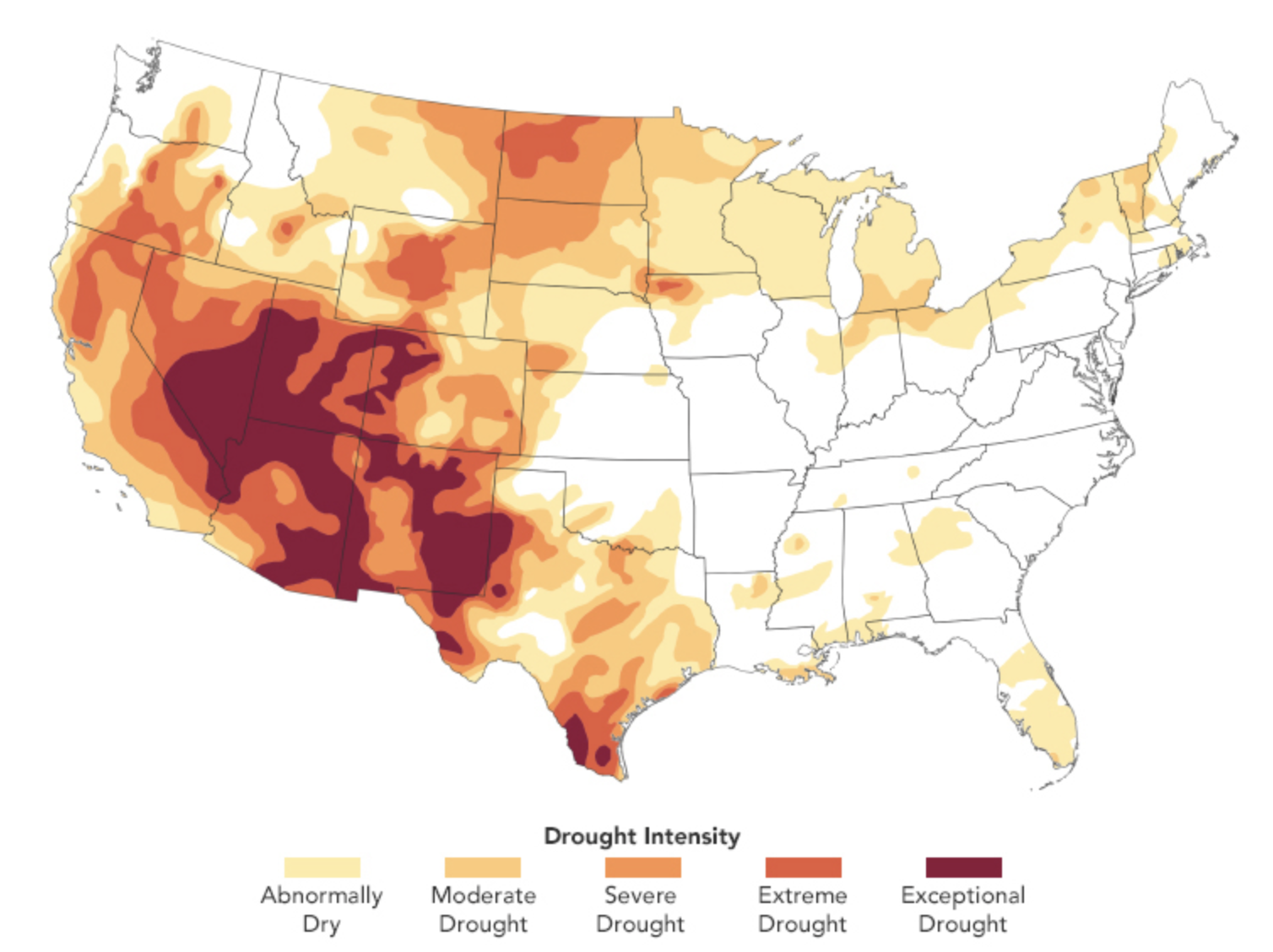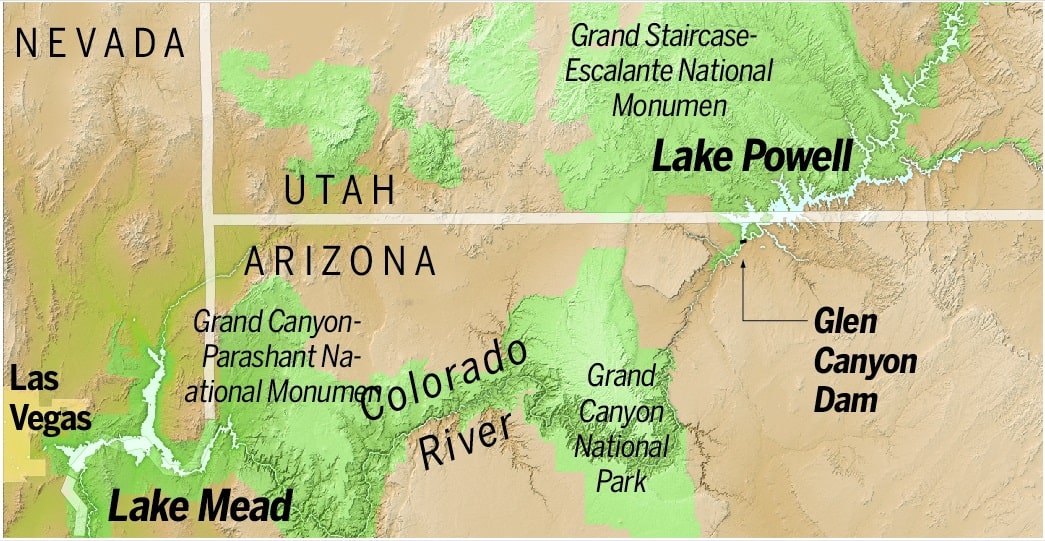
Water levels in the western United States are nearing historically low levels. Despite snowstorms in parts of the West, we haven’t seen enough precipitation to replenish water sources. Many man-made lakes have seen their water levels fall, diminishing reserves that supply millions of people. Projections show that levels could drop even more, which may prompt the federal government to declare its first-ever water shortage declaration.
Recently, the US Bureau of Reclamation (USBR) released its 24-month projections, showing less water coming from the Rocky Mountains and into the western part of the country. The Colorado River supplies much of the water that feeds into reservoirs such as Lakes Mead and Powell. These reservoirs, in turn, distribute water towards the southwestern states. The USBR predicts that Mead and Powell will drop even further, creating the potential for a water shortage declaration. A shortage will be declared if Lake Mead drops below the depth threshold of 1,075 feet.
Less water also means less electricity. The USBR is preparing for the possibility that water levels drop below a level that fails to turn the turbines at the Hoover Dam. They have adjusted the dam’s turbines to allow for efficient movement at lower water levels. Regardless of the alterations, lower water levels will still lead to less energy production.

Seven states rely on water from the Colorado River: Arizona, California, Colorado, Nevada, New Mexico, Utah, and Wyoming. Five of these states (AZ, CO, NM, NV, UT) have the worst drought conditions. Without a regular water supply from the Rockies, these states may sink even further into drought. While Arizona, Nevada, and New Mexico have all voluntarily given up water supplies, falling water levels will force them to make mandatory restrictions. Not only will this affect the states’ residential and commercial water use, but it will also raise the level of fire danger.
Currently, almost half of the United States is experiencing drought conditions. In California, where wildfires have raged in recent years, many reservoir levels sit below historic averages. This year, a weak monsoon season has stifled precipitation, not allowing the ground to reabsorb much of the moisture it has lost. Without its usual strong winter storms, the state has seen below-average snowpack in the Sierra Nevada range, leading to less snowmelt in the spring and summer. This pattern is consistent with the long megadrought the region has seen in the past couple of decades. Between 2000-2018 was the driest period in the southwestern United States since the 1500s, according to this study.
If current patterns continue, it won’t be long before more of the continental United States experiences drought. The National Oceanic and Atmospheric Administration (NOAA) predicted that warmer than average temperatures this spring combined with low soil moisture and below-average precipitation could extend drought conditions into the Great Plains and southern Florida. Dwindling water resources, dry soil, and high wind conditions will only increase the risk of fires.

One thought on “Western United States on Brink of First Ever Water Shortage Declaration”